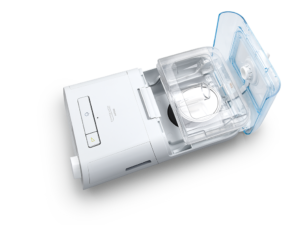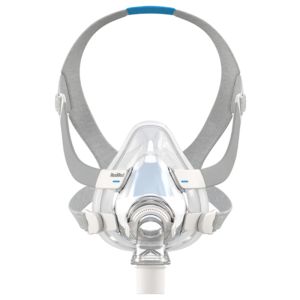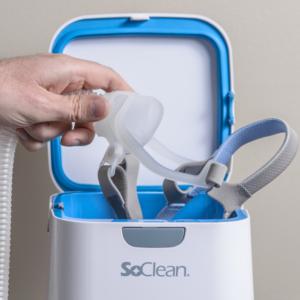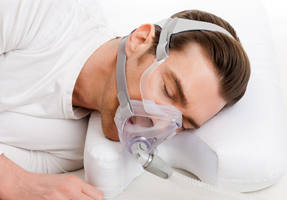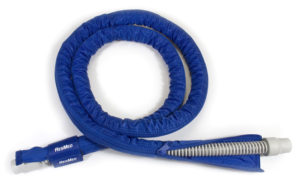
Winter brings with it cozy fires, hot chocolate, soft sweaters and snow. Of course, with the winter wonderland comes the dreaded flu season. On top of having to wear a CPAP mask, you may also have a stuffy nose, sore throat, cough or nasal congestion to contend with. You may even feel like taking a break from treatment – at least until you are all cleared up – but doctors will tell you that it is imperative that you don’t quit. It is even more critical to adhere to CPAP treatment when you are under the weather, because your body will rely on deeper, more restorative sleep to feel better. Here are some tips to help you stick to CPAP.
1. Use a Heated Humidifier
Humidifiers can relieve nasal congestion because they add moisture and humidity into the air you breathe. Dr. Amber Luong, an ENT specialist, says “Humidified air is good for sinusitis, especially in the winter. Think of the mucus in your nose and sinuses as being like tears. If your tears were thick and sticky, they would not be able to flow from your eyes.” (via Everyday Health)
- Make sure to clean your humidifier tub every day with water and mild soap.
- Fill your humidifier tub with fresh distilled water every night before use.
2. Over the Counter Nasal Sprays
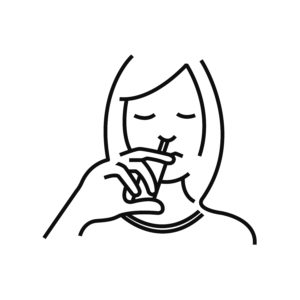
If your nose is particularly runny or congested and you’re feeling sick, head to your pharmacy and look for an over the counter nasal spray that is specifically designed to clear the congestion caused by the common cold. If allergies are the cause of your runny nose and congestion, you may want to look for an antihistamine nasal spray. Consult your doctor for more information.
3. Use a Full Face Mask Instead of a Nasal Mask
You may have been dealing with a runny nose and nasal congestion for a couple of weeks. One of the biggest downsides is your nose will pretty much be out of service, leaving your mouth to do most of the breathing. Keep a full face mask on hand so you don’t go a night without CPAP. Just switch to your full face mask when you can’t breathe through your nose.
- Make sure you are using a full face mask that is the right size for you. If you need help sizing your mask, call Easy Breathe at 866-564-2252 or email at [email protected].
4. Annihilate Bacteria and Viruses with the SoClean 2
When you have a cold, lingering germs are one of the biggest threats to your recovery. When it comes down to it, CPAP masks and hoses can get covered with cooties. The best way to avoid getting sick is to make sure your CPAP equipment is clean. This is exactly why you want to use the SoClean 2 CPAP sanitizing machine, which will kill 99.9% of bacteria, mold and viruses. If you want to clean your CPAP quickly and easily, the SoClean 2 is the way to go. In the end, you don’t want to keep infecting yourself.
5. Change your Sleeping Position
Are you a back sleeper? Sleeping on your back can make it much more uncomfortable to sleep and receive CPAP therapy when you are stuffed up. In this case, it is recommended to sleep with a few pillows under your neck so that you can have a bit of leverage and elevation. The key is to not let that post nasal drip cause an increase of mucous build up. Check out the Best in Rest Memory Foam CPAP Pillow, specifically designed to allow more comfortable side-sleeping.
6. Reduce The Chances of a Rainout Storm
When you are stuffy and congested, the last thing you want is a bunch of water splashing out of your CPAP mask and hose and onto your face. Not only is it uncomfortable, but it may also exacerbate your symptoms. This is why you want to reduce the chances of rainout. One of the best ways to do this is to use a heated hose – this will keep temperatures even so that condensation doesn’t build up. You could also use a hose wrap or cover to make sure rainout doesn’t rain you out.
- If you don’t know which heated hose is compatible with your CPAP machine, call Easy Breathe at 866-564-2252 or email at [email protected].
7. Try an Auto CPAP
![ProEXR File Description =Attributes= channels (chlist) comments (string): "created with mental ray 3.11.1.9" compression (compression): Zip16 dataWindow (box2i): [0, 0, 4095, 2731] displayWindow (box2i): [0, 0, 4095, 2731] lineOrder (lineOrder): Increasing Y pixelAspectRatio (float): 1.000000 screenWindowCenter (v2f): [0.000000, 0.000000] screenWindowWidth (float): 1.000000 =Channels= A (half) B (half) CSTCOL:emissiveGreen.animCam.A (float) CSTCOL:emissiveGreen.animCam.B (float) CSTCOL:emissiveGreen.animCam.G (float) CSTCOL:emissiveGreen.animCam.R (float) CSTCOL:emissiveScr3787945892.A (float) CSTCOL:emissiveScr3787945892.B (float) CSTCOL:emissiveScr3787945892.G (float) CSTCOL:emissiveScr3787945892.R (float) CSTCOL:emissiveWhite.animCam.A (float) CSTCOL:emissiveWhite.animCam.B (float) CSTCOL:emissiveWhite.animCam.G (float) CSTCOL:emissiveWhite.animCam.R (float) DIFFNS:diffuseNoSh2098205007.B (half) DIFFNS:diffuseNoSh2098205007.G (half) DIFFNS:diffuseNoSh2098205007.R (half) G (half) INDIRR:indirect.animCam.B (half) INDIRR:indirect.animCam.G (half) INDIRR:indirect.animCam.R (half) MATTE:matte.animCam.B (half) MATTE:matte.animCam.G (half) MATTE:matte.animCam.R (half) R (half) REFL:reflection.animCam.B (half) REFL:reflection.animCam.G (half) REFL:reflection.animCam.R (half) REFR:refraction.animCam.B (half) REFR:refraction.animCam.G (half) REFR:refraction.animCam.R (half) SPEC:specular.animCam.B (half) SPEC:specular.animCam.G (half) SPEC:specular.animCam.R (half)](https://blog.easybreathe.com/wp-content/uploads/2015/11/AirSense-10-AutoSet-with-HumidAir-300x200.jpg)
When it comes to CPAP machines, you have the traditional model and the auto CPAP machine. The traditional model provides pressure at one fixed level. Then you have the auto CPAP machine, which uses high-tech algorithms to automatically regulate pressure levels based on your needs. Basically, with the auto CPAP machine, you don’t have to do anything but sleep – the machine will read how hard you are breathing and will decrease or increase the pressures accordingly. For sleep apnea sufferers that are more prone to seasonal flu or allergy symptoms, this may add a lot of relief.



